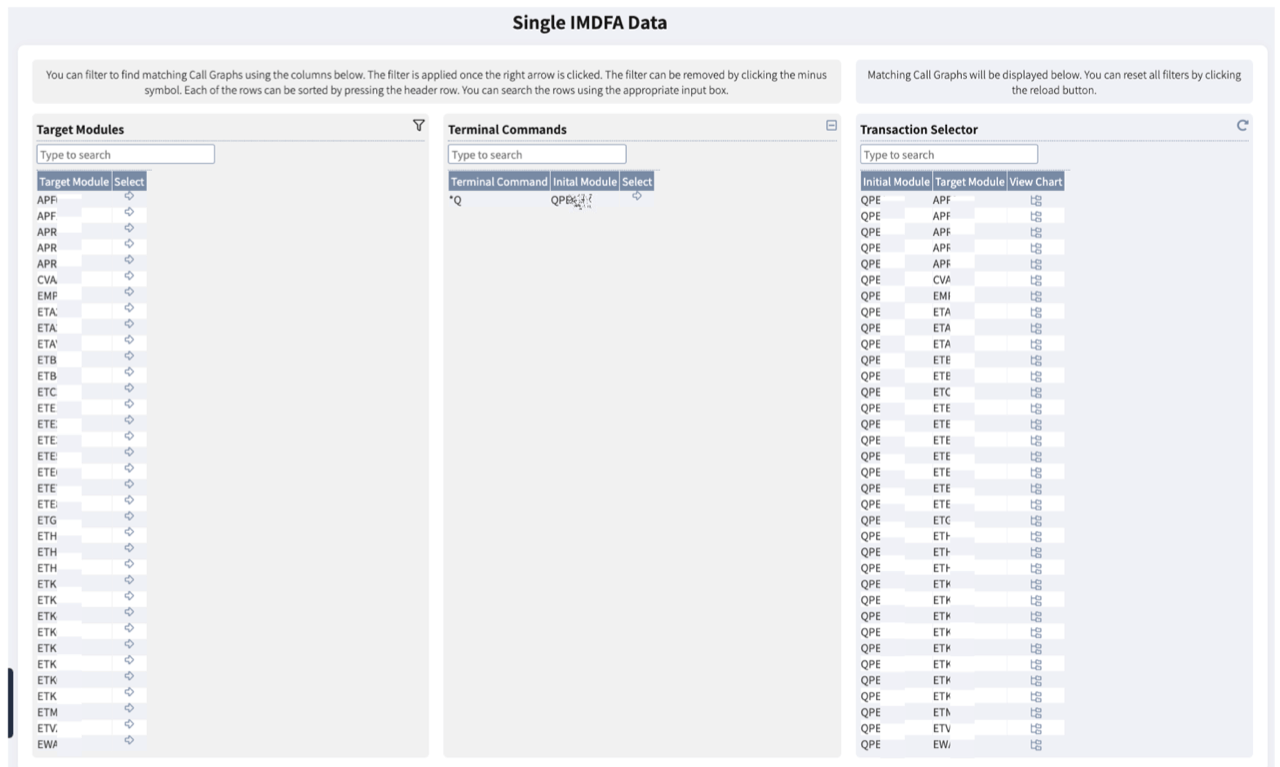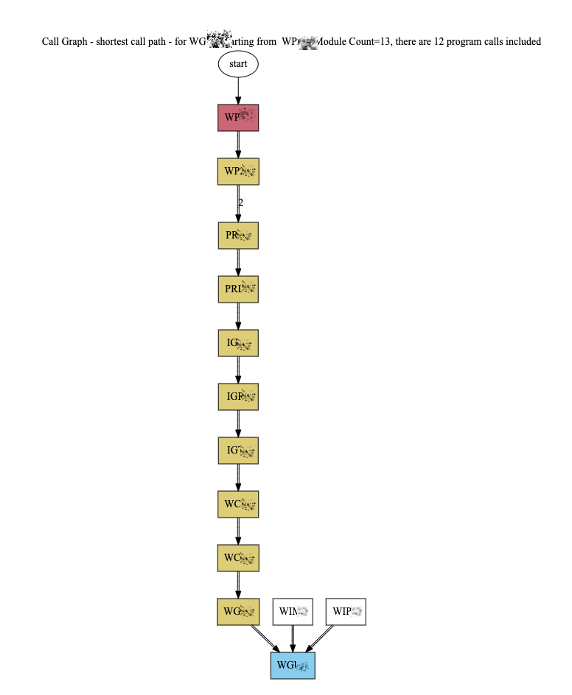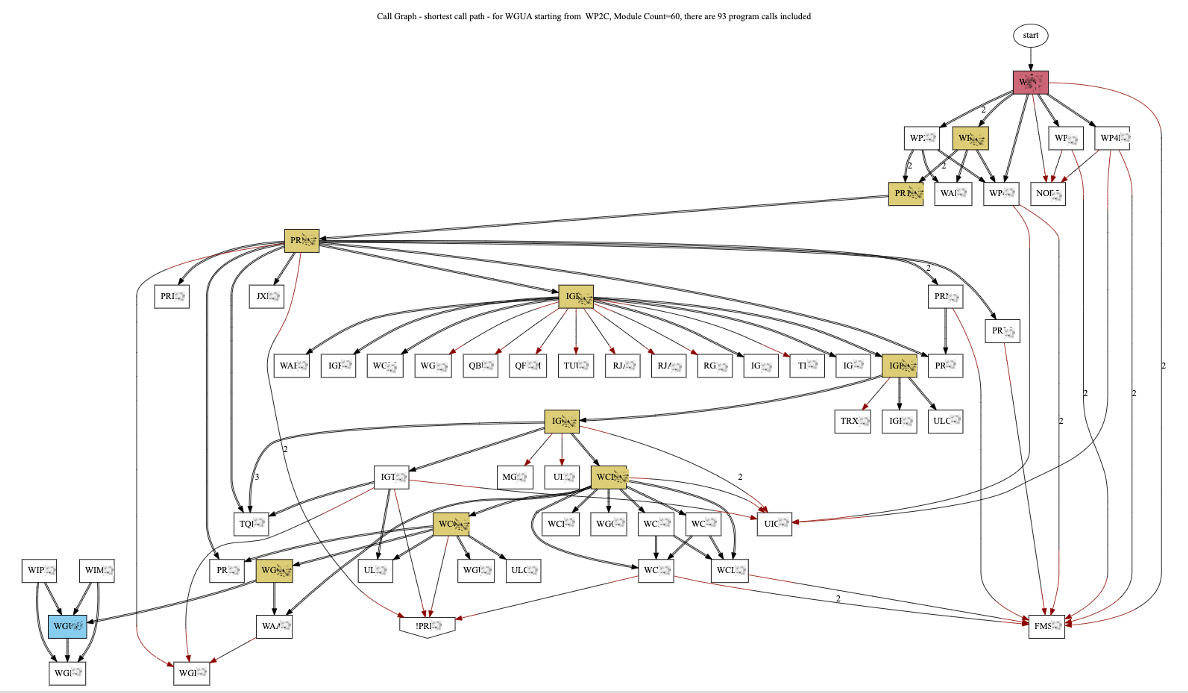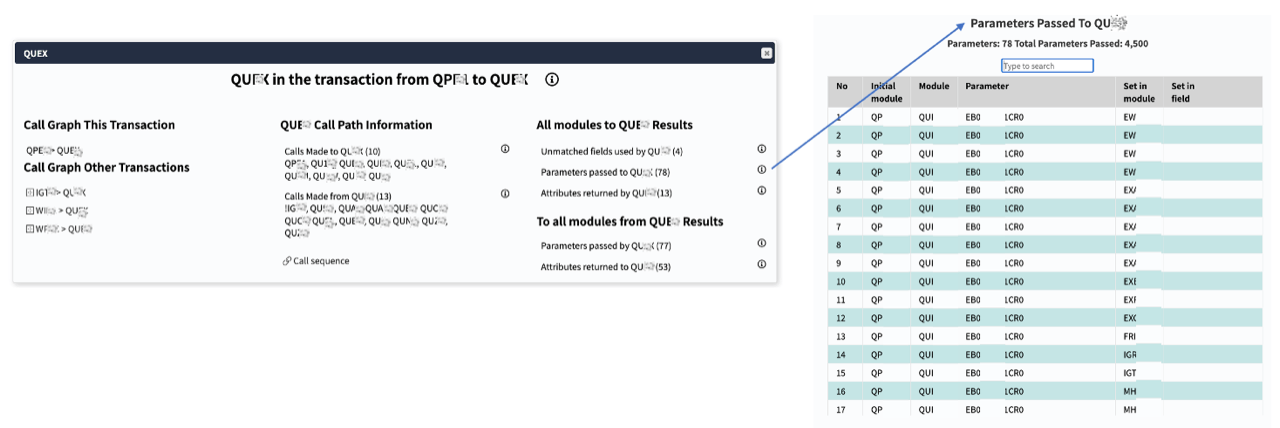SML Business Function
The Business Function tool is an analysis of the Inter Module Data Flow and is the latest development to help with business rules definition and recovery. It shows how to follow a transaction from terminal command down to individual modules and also how the data moves through that path. It also shows how to go from a specific module to the commands that could invoke that module

IMDFA – Full WPXX Call Graph
From entering Initial Module WPXX, IMDFA shows which modules are possibly involved. To get an accurate representation of a command we need to resolve all module calls possible by invoking that command, the following represents modules called by a typical TPF command. There are 2300 modules in this example and to fully resolve this network takes 2 billion operations. We then provide a way for the analyst to use this information to aid comprehension and move around the modules in the network

We can provide a path from a terminal command showing modules called using filters to make the result set more manageable.
In this example, we have a terminal command and we show the initial module invoked then the list of possible modules.

This example shows the call graph for WGXX from WPXX Branch 0, which is the shortest path between the 2 modules for WGXX from WPXX.
The Red box is the start of the path and the Blue box is the destination the Gold path is the direct flow from Red to Blue.

This example shows the call graph for WGXX from WPXX Branch 1. The Red box is the start of the path and the Blue box is the destination the Gold path is the direct flow from Red to Blue.

Right Clicking a module in the Call Graphs will allow the user to see the Transaction Information PopUp.
Each (i) icon is clickable to show more details in a secondary PopUp.


